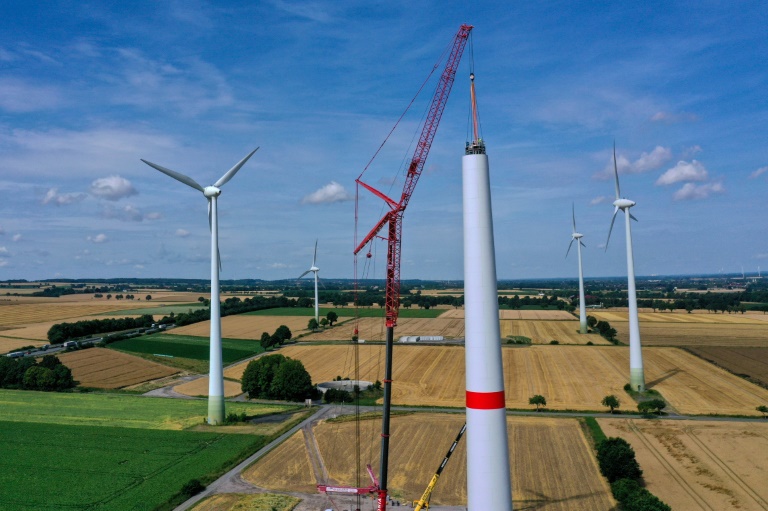Germany behind schedule on wind energy rollout: study

The German Wind Energy Association said 331 wind power stations had been built in Europe’s top economy since January with a capacity of 1.57 gigawatts
Berlin – Germany has made strides in expanding its onshore wind power capabilities this year but needs to pick up the pace to meet key targets for the decade, a sector study said Tuesday.
The German Wind Energy Association said 331 wind power stations had been built in Europe’s top economy since January with a capacity of 1.57 gigawatts (GW).
The findings of an analysis carried out with the VDMA association representing the power and heat generation sector said the 2023 activity marked an acceleration on the previous year, and could total up to 3.2 GW by the end of December.
However, this expansion is still far from meeting the requirements to reach the target of 115 GW installed by 2030, with the existing total now approaching just 60 GW.
Almost doubling this figure would require an expansion of 10 GW every year from 2025 onwards.
At the current rate, “the targets will be missed”, said VDMA managing director Dennis Rendschmidt.
The planning and approval procedures for wind power plants can take 24.5 months on average which together with logistical hurdles are a drag on development, the study found.
The sector associations said they hoped a series of recent regulatory measures to cut red tape would soon take effect.
However, political resistance to turbines from local communities poses a further obstacle, with far more permits issued in the north than in the south of the country.
Chancellor Olaf Scholz’s coalition government has set a target of allocating at least 1.4 percent of the country’s surface area to the installation of wind power stations by 2027, and at least two percent by 2032, compared to 0.7 percent currently.
It has also pledged to produce 80 percent of electricity from renewable sources by 2030.
Last week Germany auctioned off rights to build offshore wind power plants for the first time, raising 12.6 billion euros ($14 billion) from the winning bids from energy giants BP and TotalEnergies.
